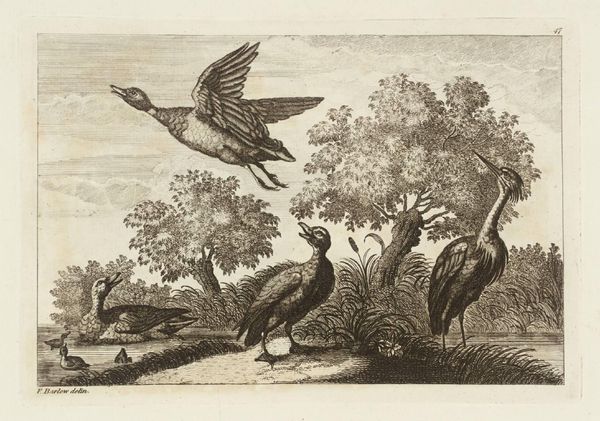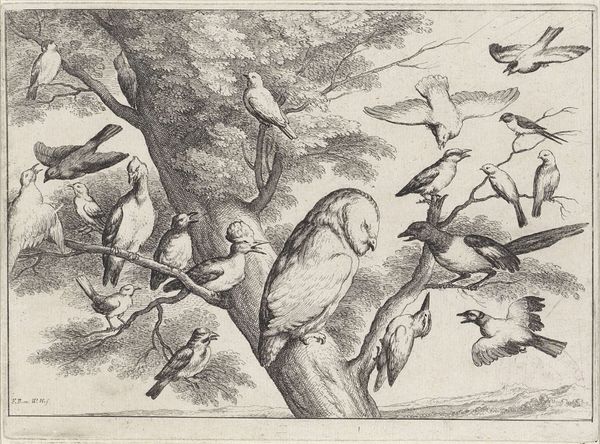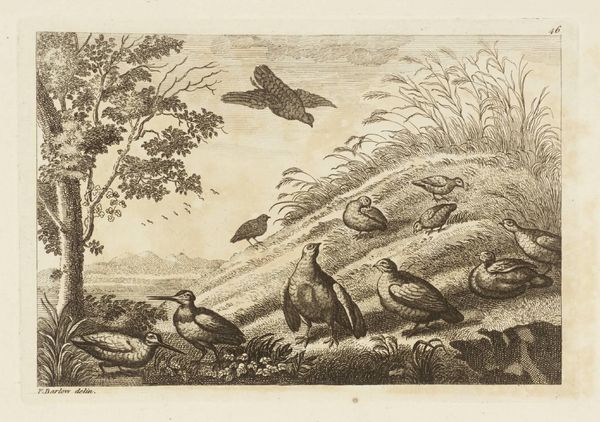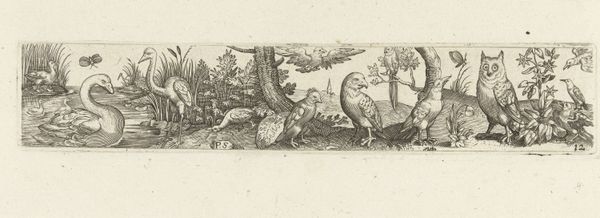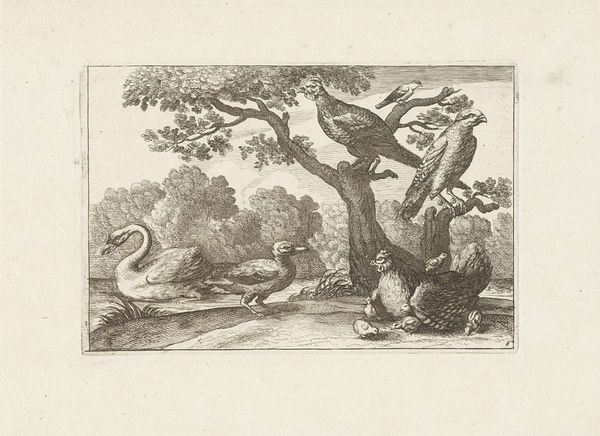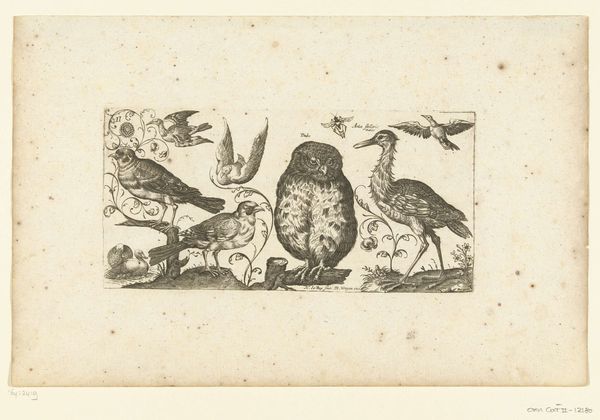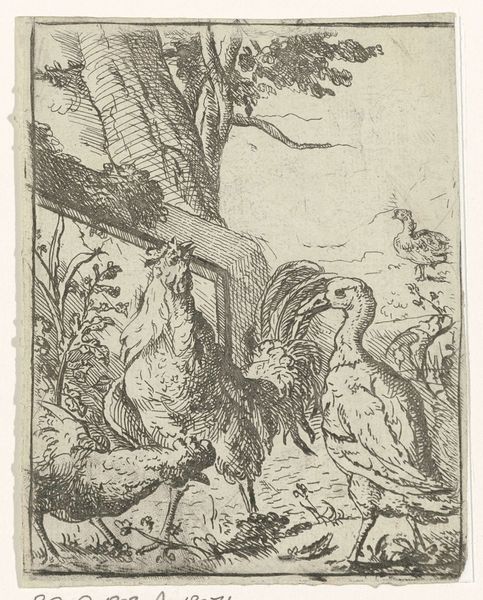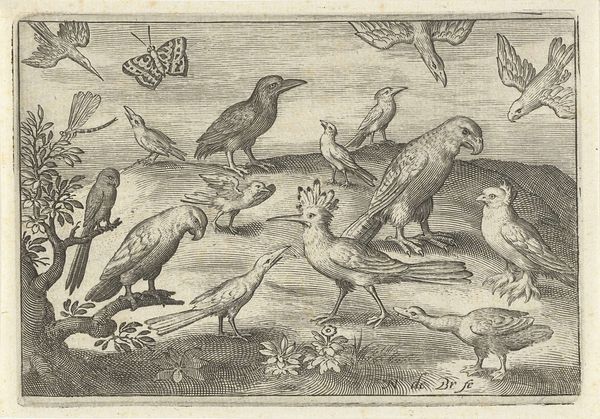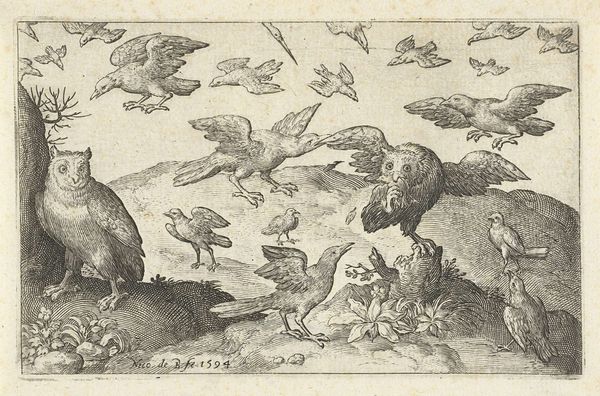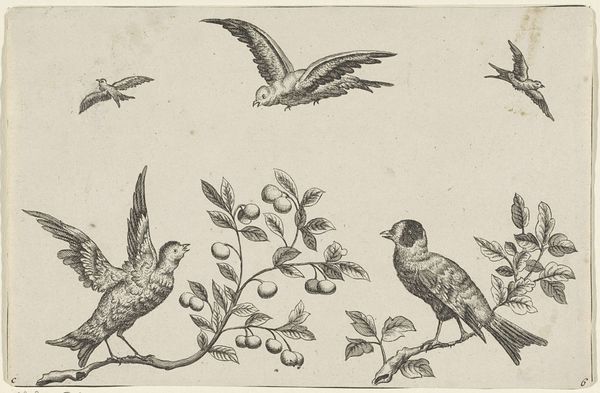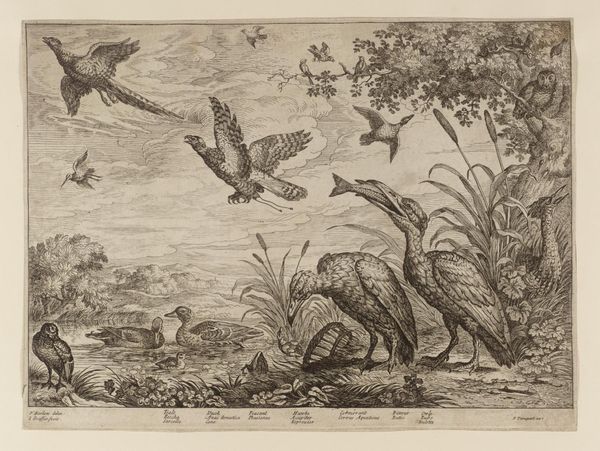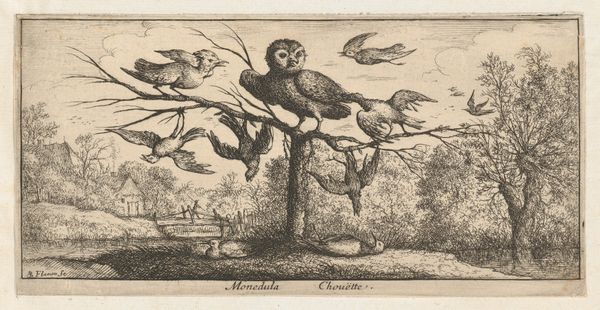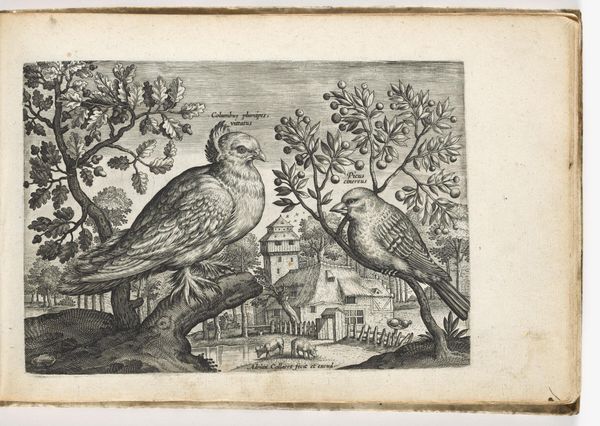
print, engraving
#
aged paper
#
baroque
# print
#
old engraving style
#
landscape
#
bird
#
engraving
Dimensions: height 130 mm, width 195 mm
Copyright: Rijks Museum: Open Domain
Curator: This is a print titled "Owl and other birds in tree" by Pieter Schenk, dating back to somewhere between 1675 and 1711. It’s an engraving displayed here at the Rijksmuseum. Editor: It’s stark, isn’t it? The tight hatching creates this sense of hushed observation. I’m immediately drawn to the tonal contrasts – the owl, centrally placed, anchors the entire composition. Curator: The owl does command attention. It's positioned so prominently. Owls have held diverse symbolism for centuries – wisdom, darkness, even death. But its sleepy pose here feels... ambiguous. Editor: Interesting, isn't it? The way Schenk has composed it suggests a specific narrative, but also obscures its direct meaning. The linework guides us – leading our eye upward into the leafy tangle. There's definitely a push and pull at play here, particularly in the relationship between that imposing central owl and the busily posed songbirds which surround it. Curator: Consider, though, that collections of diverse animals are featured as "Noah's Ark" iconography, often with specific animals linked to specific places on earth, like the bird called "Americaantjes" (American finches). In contrast to some loud birds known for mischief-making like the magpie here, perhaps the pensive owl symbolizes quiet watchfulness, representing the spiritual authority of the land. Editor: Ah, a land guardian in avian form! So you're saying, its prominence may signal its specific allegorical significance in Baroque terms rather than in simply pictorial or structural terms. But how sure can we be that the message is singular? The clustering, overlapping effect also complicates the story, doesn't it? Schenk could well be asking us to question any assumptions we make on seeing it, in strictly hierarchical terms. Curator: I concede your point that multiple readings are plausible, reflecting the visual density of the Baroque style. Perhaps Schenk intended to spark just such a layered interpretation, acknowledging how visual memory influences cultural ideas over time. Editor: I see this dense visual field now not just as Schenk’s detailed vision but also as an invitation to question it—a powerful act of artistic interpretation within a cultural context.
Comments
No comments
Be the first to comment and join the conversation on the ultimate creative platform.
